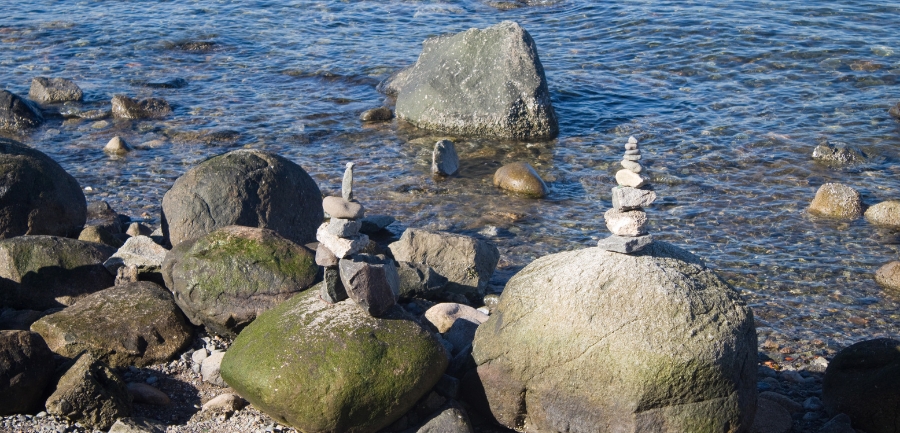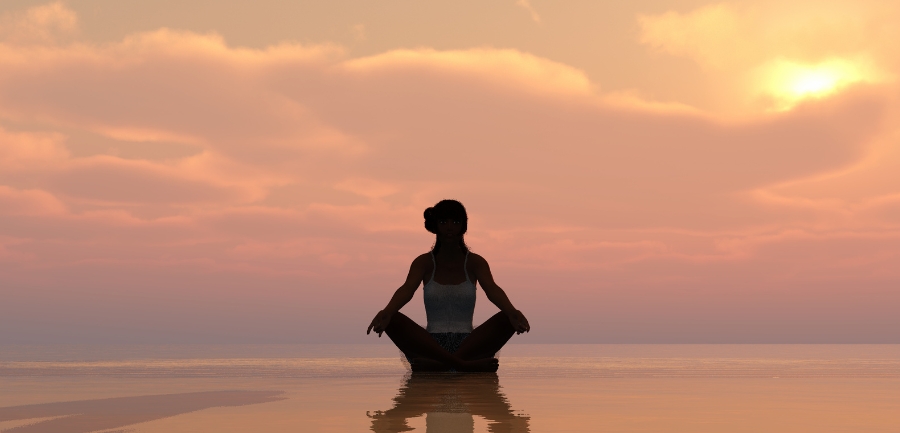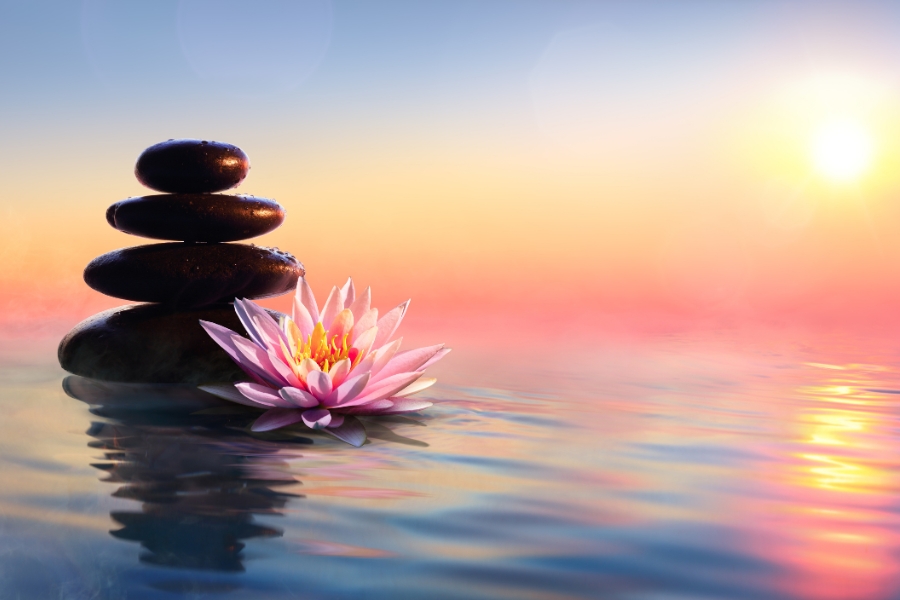We’ve all heard the term “zen,” haven’t we? Tossed around in casual conversations, in yoga studios, or while sipping that herbal tea, but what does “zen” truly mean in today’s world?
Table of Contents
It’s not just a word to describe someone chilling on a weekend. Instead, it’s a state of being, a sense of peace and calm in the midst of our bustling, notification-filled lives. Think of it as your inner sanctuary, untouched by the relentless pace and chaos of modern living. Why is achieving this state of zen crucial?
Because, now more than ever, amidst the blur of deadlines, and the hum of screens, we need that anchor, that grounding point, to keep us centered and true to ourselves. So, let’s dive deep, cut through the noise, and embrace the serenity that’s been waiting for us all along.
The History of Zen
Isn’t it fascinating how ancient teachings remain relevant, even in our age of tech and constant connection? Let’s embark on a brief time travel to understand the roots of Zen.
Originating from the tranquil monasteries of China, Zen Buddhism isn’t merely a religion; it’s an experience, a way of life. It sprouted from the teachings of the Buddha and was nurtured by the philosophical underpinnings of Taoism. The core of Zen lies in ‘zazen’ or seated meditation, emphasizing experiential wisdom in the attainment of enlightenment.
But you might wonder, how do these age-old practices tie into our hyper-digital lives? The beauty of Zen is its adaptability. Even in our era of instant gratification and endless distractions, the essence of Zen – being present, finding clarity amidst chaos, and understanding the self – remains the same. Whether it’s taking a mindful moment away from your screen or practicing deep breathing before a big meeting, the principles of Zen Buddhism offer timeless strategies to navigate our complex world with grace and intentionality.
Zen and Modern Living

Ah, the modern era! A time when smartphones buzz more than bees and screens often replace serene landscapes. Navigating through this digital age, it’s easy to see the challenges that stand between us and a state of zen.
The digital age, with its endless notifications and dopamine-driven apps, often nudges us away from the present moment. We’re either lost in the virtual realms of the past (thanks to those “On This Day” photo memories) or the anticipations of the future (as we endlessly scroll through our feeds). This constant pull makes maintaining a zen state feel like trying to hold water in our hands.
But fret not, for the fusion of Zen and modernity is not only possible but immensely rewarding. Here are some actionable tips to strike that delicate balance:
- Digital Detox: Even if it’s just for an hour before bed, try to disconnect. Read a book, meditate, or simply sit in silence, soaking in the real, tangible world around you.
- Mindful Tech Use: Before checking your phone, ask yourself, “Why am I picking this up?” Being conscious of our tech habits can break the cycle of mindless scrolling.
- Nature Breaks: Amidst virtual meetings and online chats, make time to step outside. Nature has a way of grounding us, reminding us of life beyond pixels.
- Single-tasking: Instead of juggling multiple tabs and tasks, focus on one thing at a time. Channel the Zen practice of doing each action deliberately and with full attention.
By integrating these simple yet profound strategies, we can harness the best of technology without losing our zen essence. Remember, it’s not about shunning the modern world but engaging with it mindfully, ensuring our inner peace remains unshaken amidst the digital storm.
Feeling Zen

In today’s world, we often seek external pleasures to fill internal voids. But what if I told you that the path to true contentment might just lie within? This is where the concept of feeling “zen” comes into play.
The Emotional Landscape of Zen
To many, “zen” evokes images of serene Buddhist monks or tranquil gardens. But delve deeper, and you’ll find it’s an emotional state, one of inner peace, balance, and profound contentment. When you’re truly in a zen state, the world seems clearer; it’s as if you’re seeing it through a freshly wiped window, unclouded by the dust of anxieties and concerns.
So, what does it feel like? Imagine being in the eye of a storm, where everything around you whirls in a frenzy, yet you remain untouched, calm, and centered. That’s the emotional essence of Zen.
Feeling zen doesn’t just offer fleeting moments of peace; it transforms our daily lives. When we’re rooted in this serene state, we approach challenges with a clear mind, make decisions from a place of balance, and interact with others from a space of kindness and understanding.
The Physiological Benefits of Feeling Zen
It’s not just in our minds. The beauty of Zen lies in how it bridges the gap between our emotional well-being and our physical health. When we achieve this harmonious state, our bodies respond in kind.
- Reduced Stress: Stress is a known villain for health, and feeling zen counteracts it. By promoting a calm mind, the stress hormone, cortisol, lowers, leading to various health benefits.
- Improved Sleep: Ever noticed how a calm, untroubled mind leads to better sleep? That’s your zen at work! When our minds aren’t racing, we drift into deeper, more restorative slumbers.
- Enhanced Immunity: Believe it or not, a zen state can boost our immune response. Lowered stress means a more robust immune system, ready to fend off invaders.
- Better Digestion: Our gut is often referred to as our second brain. When we’re calm and centered, our digestion improves, leading to better nutrient absorption and overall gut health.
- Cardiovascular Health: A calm mind promotes a healthy heart. Lower stress levels can lead to reduced blood pressure, benefiting our cardiovascular system.
In essence, feeling zen isn’t a luxury; it’s a necessity. The ancient wisdom of Zen has enormous importance in our current lives because of the clear link between our mental tranquillity and our physical health. So, the next time you experience peace and quiet, soak it up because you know it’s doing your body and mind a world of good.
Finding Zen

Finding peace and quiet in the midst of the chaos of modern life might feel like looking for a needle in a haystack. But what if I told you that zen isn’t something to find but something to practice and embrace in the ordinary? Let’s dive into the art of integrating Zen into both our everyday actions and time-honored traditions.
Zen in Daily Activities
We often associate zen with grand moments of enlightenment or hours spent in meditation. Yet, the true beauty of Zen lies in its ability to transform the mundane into the magical.
- Mundane Tasks as Zen Practices: Ever tried washing dishes with complete mindfulness? Feeling the soap bubbles, the temperature of the water, and the texture of each dish? This simple act can become a meditative practice, pulling you into the present moment. Similarly, activities like gardening, walking, or even sipping your morning coffee can be infused with a touch of zen. The key? Complete presence.
- Techniques to Infuse Zen into Your Day:
- Mindful Breathing: Whenever you find a quiet moment, take ten deep breaths, focusing entirely on the sensation of breathing in and out.
- Single-tasking: Instead of multitasking, dedicate your entire focus to one task at a time, immersing yourself fully.
- Gratitude Journals: Start or end your day by jotting down three things you’re grateful for. This simple act shifts your focus to abundance and contentment.
Traditional Practices for Finding Zen
While incorporating zen into daily tasks is transformative, there’s immense value in the traditional practices rooted in centuries of wisdom.
- Meditation: Often considered the heart of Zen, meditation is all about stilling the mind. Whether it’s seated meditation, walking meditation, or guided sessions, the key lies in quietening external and internal chatter, even if just for a few minutes.
- Zen Gardens: These carefully curated spaces, with their raked sand and strategically placed rocks, aren’t just for aesthetics. They symbolize the larger universe and our place in it. Interacting with a zen garden, even if it’s a mini one on your desk, can be a form of moving meditation.
- Other Practices: From practicing calligraphy with mindfulness to engaging in tea ceremonies, various traditional activities can help anchor us in the zen mindset.
- The Essence of Consistency: Dipping into zen practices sporadically might offer momentary relief, but the magic truly unfolds when we commit to them consistently. It’s akin to watering a plant; a one-time pour might not do much, but regular nurturing can lead to flourishing growth.
Finding zen is not about dramatic shifts but about conscious choices. Whether through daily actions or age-old traditions, every moment holds the potential to be a zen moment. It’s up to us to seize it.
Zen Moment Meaning

Life is a tapestry of countless moments – some loud, some quiet, some chaotic, and some serene. Among these, there are instances that stand out, where time seems to slow down, and we’re embraced by an overwhelming sense of peace. These are our ‘zen moments’. But what do they truly mean, and how do they shape our overall well-being?
Recognizing a Zen Moment
Have you ever been so engrossed in a book that the world around you blurs? Or perhaps stood atop a hill, with the wind rustling your hair, feeling an inexplicable connection to everything? These are glimpses of what we often term as ‘zen moments’.
- What Constitutes a ‘Zen Moment’: At its core, a zen moment is a slice of time where we are entirely present, free from the grip of the past or the pull of the future. It’s characterized by a deep sense of inner peace, clarity, and connection.
- The Fleeting Nature of These Moments: Much like the transient beauty of cherry blossoms, zen moments are ephemeral. They aren’t prolonged states but brief pauses where we touch base with our true selves. And it’s in their fleeting nature that their beauty lies; they serve as gentle reminders of the serenity that’s always accessible to us, amidst life’s tumult.
The Impact of Zen Moments on Our Wellbeing
While these moments might be brief, their imprint on our psyche is profound.
- Recharge and Rejuvenation: Just like a power nap can re-energize us amidst a tiring day, a zen moment can act as a quick reset button. It clears mental fog, eases emotional turmoil, and helps us approach challenges with renewed vigor.
- Anchor Points in Mindfulness: Zen moments, though spontaneous, can be nurtured. As we cultivate a regular mindfulness practice, the frequency of these moments can increase. They act as anchors, grounding us in the present and helping us navigate our days with a greater sense of balance and poise.
- Holistic Wellbeing: Beyond mental peace, these moments play a role in our overall health. A body at peace promotes better digestion, improved sleep, and a stronger immune response. It’s a holistic dance of the mind, body, and soul.
In the vast symphony of life, zen moments are the soft, soulful notes that resonate deep within. They remind us of the tranquility that exists, even when storms rage on. By understanding and cherishing these moments, we pave the way for a life infused with mindfulness, grace, and, of course, more such beautiful moments.
Find Your Zen

In the pursuit of zen, there isn’t a one-size-fits-all approach. It’s an intensely personal journey, much like thumbprints – unique to each individual. As we venture into this exploration, it’s essential to recognize our path, understanding that the milestones and challenges will be as individual as we are.
Personalizing Your Zen Journey
The image of a monk meditating atop a serene mountain might be the poster child for Zen for some, but for others, it might be dancing in the rain or doodling in a sketchbook. Your zen is yours alone.
- Understanding Everyone’s Zen is Different: What soothes one person might agitate another. Some find solace in the quiet of a forest; others in the rhythmic beats of a dance club. The diversity is the beauty of the Zen experience.
- Tips for Discovering Your Zen:
- Self-Reflection: Spend quiet moments introspecting. What activities or places make you lose track of time? When do you feel most at peace?
- Experiment: Try different relaxation and mindfulness practices. Yoga, art, music, nature hikes – dabble in various activities to see what resonates.
- Consult Your Past: Think back to childhood or past experiences. Often, activities we loved as children can be clues to our zen zones.
- Stay Open-minded: Sometimes, our zen might be found in the most unexpected places or practices.
Overcoming Obstacles in Your Zen Journey
Every path has its thorns, and the journey to zen is no exception. But these challenges aren’t roadblocks; they’re stepping stones, each teaching us a lesson, drawing us closer to our essence.
- Navigating Challenges:
- Distractions: We live in a world filled with noise. Finding quiet moments can be challenging. Consider carving out dedicated ‘me-time’ or setting boundaries for uninterrupted zen moments.
- Self-Doubt: “Am I doing this right?” is a frequent question. Remember, there’s no ‘wrong’ way to find your zen. Trust your journey.
- External Judgments: Not everyone will understand your path, and that’s okay. Focus on your personal growth, not external validation.
- Keeping the Faith:
- Celebrating Small Wins: Every time you feel even a fleeting moment of zen, celebrate it. These moments compound over time.
- Having Patience: Like a gardener patiently waiting for the seeds to sprout, know that your efforts will bear fruit. It’s a journey, not a race.
- Seeking Support: Connect with like-minded individuals or groups. Sharing experiences and learning from others can be both comforting and enlightening.
In essence, finding your zen is a dance between self-discovery and perseverance. As you tune into your rhythm, embrace both the crescendos and the quiet pauses. Each step, whether filled with joy or challenges, is a beautiful part of this dance of life. Remember, your zen is waiting; all it requires is a curious heart and a willing spirit.
Ease and Lightness Mindfulness

In the realm of zen and mindfulness, there’s a delicate balance to be struck. While dedication and discipline play their roles, so does the essence of ease and lightness. It’s about approaching our journey not with a heavy hand but with the gentle touch of a feather. It’s in this gentleness that we can truly uncover the transformative power of mindfulness.
The Role of Lightness in Zen
Zen isn’t just a practice; it’s an art. And like any art, it flourishes best when done with passion, not pressure.
- The Importance of Not Forcing the Journey: Just as a flower doesn’t bloom by pulling on its petals, our zen journey can’t be forced. Pushing too hard or setting rigid expectations can often lead to burnout or disillusionment. Instead, allow your journey to unfold organically.
- Achieving Mindfulness with a Light Touch: Mindfulness is the art of being present. But this doesn’t mean being intensely focused to the point of strain. It means observing with a soft gaze, the acknowledging thoughts and feelings without getting entangled. It’s about being present, not perfect.
Practices to Cultivate Ease and Lightness
If you’ve ever felt that your mindfulness practices are becoming too structured or rigid, here are some ways to reintroduce that much-needed lightness:
- Simple Exercises:
- Mindful Laughter: Set aside a few minutes each day to laugh genuinely. Whether it’s from a joke, a funny video, or simply the joy of being, let laughter fill you.
- Nature Walks: Instead of a structured meditation, take a leisurely walk in nature. Feel the ground beneath your feet, listen to the birds, and let nature guide your mindfulness.
- Cloud Gazing: Lie down and watch the clouds. Let your imagination run wild, seeing shapes and stories form and dissolve in the sky.
- Stories and Parables:
- The Cup of Tea: An age-old Zen story tells of a scholar who visits a Zen master to learn. As the master pours tea, he continues pouring even after the cup is full. The overflowing cup is a reminder that to learn and grow, one must first empty oneself of preconceptions.
- The Two Monks: Another tale speaks of two monks who meet a woman at a river. One monk helps her cross and then continues his journey. The other monk, perturbed, later asks why he touched the woman, violating their vows. The first monk replies, “I left her by the river. Are you still carrying her?” This story illuminates the idea of letting go, of not carrying burdens (or judgments) any longer than necessary.
Embracing ease and lightness in mindfulness doesn’t diminish the journey; it enhances it. It reminds us to enjoy the process, to find joy in the small moments, and to approach life not as a rigorous task but as a beautiful, ever-evolving dance.
A Place of Zen

The pursuit of zen involves more than just changing one’s mindset; it also involves creating physical environments that promote feelings of peace and harmony. Whether it’s a corner of your home or a hidden grove in a bustling city, finding or creating your place of zen can significantly influence your mindfulness journey.
Creating a Zen Sanctuary at Home
Every home, regardless of its size or location, has the potential to house a haven of peace. Here’s how you can infuse zen into your living spaces:
- Tips for Designing a Zen Space:
- Simplicity is Key: A cluttered space often leads to a cluttered mind. Opt for minimalistic décor. Remember, less is often more in zen design.
- Natural Elements: Incorporate elements like stones, water, and plants. They not only bring in nature but also balance the energy of a room.
- Neutral Palette: Soft and neutral colors have a calming effect. Think whites, beiges, and soft grays.
- Importance of Sensory Elements:
- Sound: Consider soft, ambient sounds like wind chimes, water fountains, or even a playlist of gentle nature sounds.
- Sight: The view matters. Whether it’s a serene painting, a window overlooking greenery, or a simple candle flame, what you see should evoke calm.
- Smell: Aromatherapy can be a powerful tool. Scents like lavender, chamomile, and sandalwood can transform a room into a relaxing retreat.
Finding Zen Spaces in the World
Beyond the confines of our homes, the world is teeming with places vibrating with zen energy. All it requires is a keen sense and an open heart to discover them.
- Places that Embody Zen:
- Nature Reserves: The rustling of leaves, the gentle flow of water, and the chirping of birds – nature reserves are alive with the music of the universe.
- Temples and Monasteries: Often built in serene locations and steeped in centuries of mindfulness practices, these places exude calm.
- Gardens: From the intricately designed Japanese Zen gardens to the simple backyard gardens, these spaces are designed for reflection and peace.
- Seeking Out Local Zen Spaces:
- Community Centers: Many local community centers offer meditation or yoga sessions which can transform ordinary rooms into places of zen.
- Parks and Water Bodies: A local park or a quiet spot by a lake can become your go-to zen retreat.
- Mindful Cafes or Bookstores: There’s a growing trend of places designed with mindfulness in mind. These can be great spaces to relax, read, or simply be.
Your ‘Place of Zen’ doesn’t have to be a secluded mountain top or an ancient temple. It can be as close as your living room or a quiet spot in a nearby park. The magic lies not just in the place but in how we approach it – with a quiet mind, a serene heart, and an ever-present awareness.
To Wrap It Up!
Finding your zen isn’t a destination but a continuous journey, one that beckons with the promise of deeper understanding and inner tranquility. Every one of us has a unique path to that tranquil space, be it in the heart of nature, within the four walls of our room, or in the silent moments between life’s chaos.
Begin today. It doesn’t have to be monumental. Start with a simple deep breath or five minutes of silence. Listen to the subtle whispers of your heart, and allow them to guide you. Remember, the quest for zen is not about perfection, but about presence.
And as you walk this path, embrace every discovery, every challenge, and every serene moment. Because in this exploration, the journey is as rewarding, if not more, than any destination you envision. Find your zen, and in doing so, rediscover the world, and yourself.
FAQs
What does it mean to find your Zen?
To find one’s Zen is to cultivate a sense of tranquility, equilibrium, and inner peace, typically via the practice of mindfulness and an acceptance of the here and now.
How do I find my inner Zen?
Find your inner Zen by practicing regular meditation, reducing external distractions, and cultivating an awareness of your thoughts and emotions without judgment.
How do I make myself Zen?
Make yourself Zen by embracing simplicity, practicing deep breathing or meditation, and focusing on the present, letting go of past regrets and future anxieties.
What is a Zen lifestyle?
A Zen lifestyle emphasizes simplicity, mindfulness, and a deep connection to the present moment, often manifested through minimalist living and regular meditation practices.

